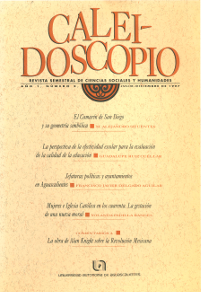The Dressing Room of the San Diego Temple and its Symbolic Geometry
DOI:
https://doi.org/10.33064/2crscsh250Keywords:
religious architecture, New Spain, architectural symbolismAbstract
This article is written with two objectives. First, to find the rational pattern or structure of harmonic proportioning behind the beauty of the monument. Second, embed that rational pattern within the specific historical conditions of its production, accounting for the architectural object as a total and significant cultural product. The conclusions of this article give an opportunity to show that the Dressing Room of the San Diego Temple constitutes an extraordinary monument not only because it is probably the last of its kind, but because of its conception itself, the idea and fundamental principles of a symbolic order that its constructor was able to translate through a system of octagenic and dinergic proportion, explainable only by the conditions of the Novohispanic world.Downloads
Published
How to Cite
Issue
Section
License
Licencia Creative Commons Atribución-NoComercial-CompartirIgual 4.0 Internacional
El lector es libre de compartir o adaptar el material en cualquier medio o formato bajo las condiciones siguientes: (a) debe reconocer adecuadamente la autoría, proporcionar un enlace a la licencia e indicar si se han realizado cambios; (b) no puede utilizar el material para una finalidad comercial y (c) si remezcla, transforma o crea a partir del material, deberá difundir sus contribuciones bajo la misma licencia que el original.
Resumen de la licencia
https://creativecommons.org/licenses/by-nc-sa/4.0/deed.es_ES
Texto completo de la licencia
https://creativecommons.org/licenses/by-nc-sa/4.0/legalcode
Cada autor es responsable del contenido de su artículo. En el caso de un texto colectivo, el primer autor asume la responsabilidad intelectual de los resultados del proceso editorial; los autores son responsables de obtener la licencia de autor para reproducir materiales gráficos o fotográficos que pertenecen a terceros.
Los autores asumen plena responsabilidad en el caso de falsificación de datos o falta de autenticidad en la investigación. Se comprometen, también, a no reutilizar trabajos ya publicados, total o parcialmente, para presentarlos en otra publicación.
Estas condiciones aplican tanto a la versión impresa como a la versión electrónica de la revista.


















